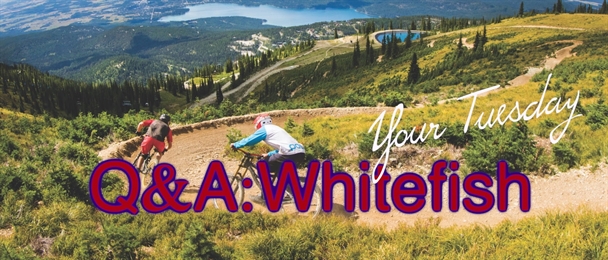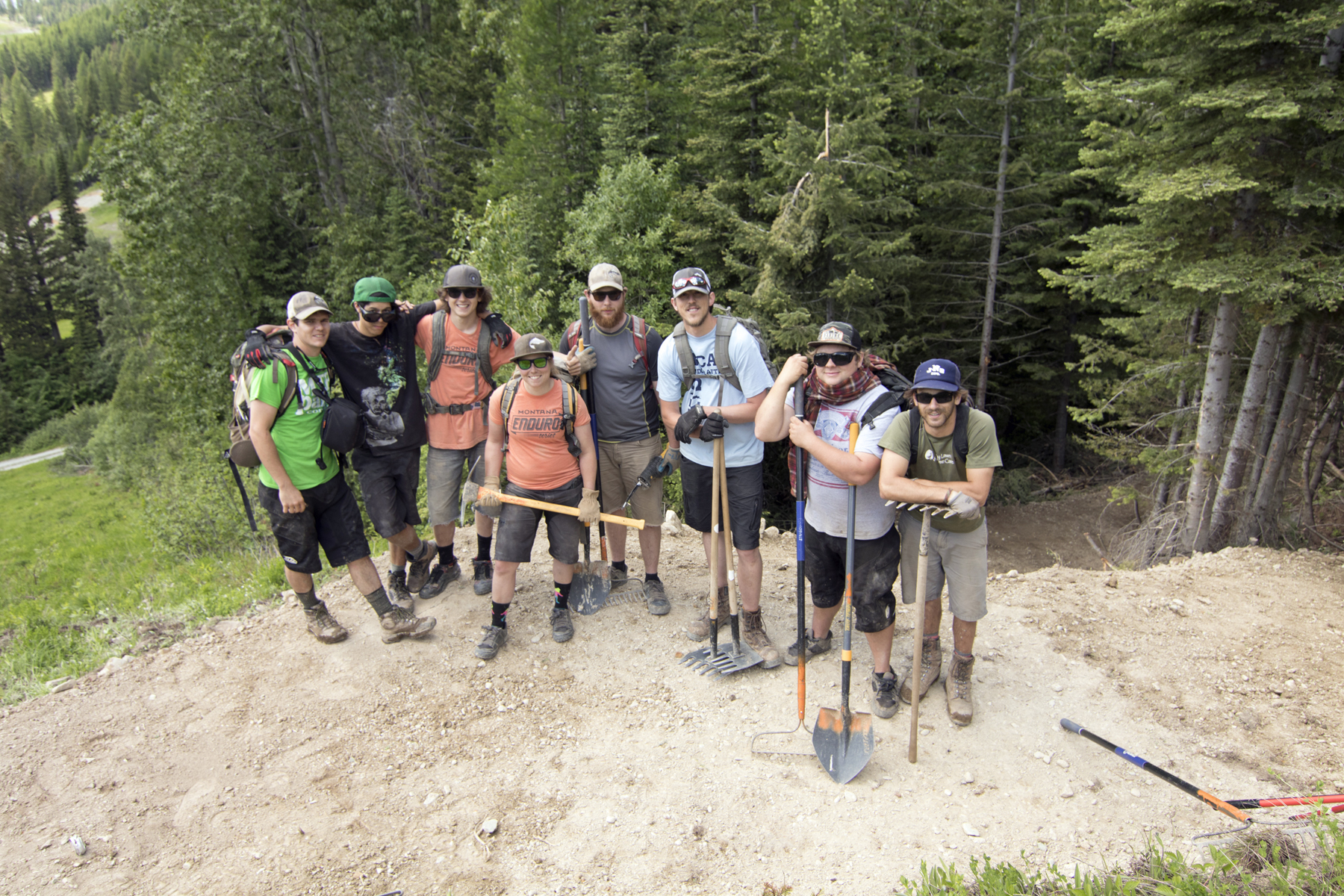Q&A: Whitefish
14 Jun 2016

(Photo credit: Noah Couser)
Whitefish Bike Park is on the BikeParkPRO app. Check it out here. Go for a rip, up-grade and win...
Q&A:
We are so excited to catch up with you today. It’s been 2 years since we last did a major follow up with Whitefish Bike Park. Who do we have the pleasure of interviewing today and what is your role at Whitefish?
Riley Polumbus, I am the PR manager and spokesperson for Whitefish Mountain Resort.
Whitefish Bike Park started in 1996 with one trail that had 2000ft of vertical called Summit Trail. Now that 20 years have past, I bet a lot has changed, and we can’t wait to read about it! What would you say is the biggest change that has happened?
There have been a few significant milestones in the history of our Bike Park. First in 2008 we completed our first downhill trail, Runaway Train. Not only was this an exciting addition to the mountain biking scene in Whitefish, the popularity of the trail assured the resort that there was a downhill bike park asking to be built here. While we waited for approval from the US Forest Service for additional trails off the summit, we focused our efforts on creating a number of trails an area we now call the Overflow Zone. These trails would offer riders multiple options to connect to from the future trails. Once we were given the green light on the 2013 bike park expansion project it doubled our downhill terrain—the biggest milestone for our park thus far.

(Photo credit: Camas Ellingson)
Since our last Q&A, 2 years ago, have you surpassed the goals you had set for the bike park? What were those goals and how did you go about achieving them? What challenges did you face?
After the addition of Runaway Train we experienced significant growth in our numbers. After the expansion in 2013 we’ve not seen the numbers we’d like to see, however we’ve received lots of positive feedback from riders as well as recognition from a variety of mountain biking media. We also received an award from IMBA in 2014. They named our new trail “Kashmir” a model flow trail. While we are proud of the notoriety we’ve received, we are also aware we need to make our bike park better-rounded. This summer we will add a new zone to our bike park that will provide beginner and intermediate riders a place to develop and progress in their riding. We hope this will help to grow our ridership.
Often riders at bike parks don’t understand the amount of effort that goes into working with the Forest Service and how long it can take to get a trail approved. How is your relationship with your local forestry? Would you like to talk a little bit about the process you go through to get trails approved?
A significant portion of our mountain is located on public lands in the Flathead National Forest therefore we are constantly working in partnership with local forest officials in summer and winter. The process to build trails, even sustainable trails like ours, takes several years and a lot of teamwork to complete. We are fortunate to have a good relationship with local forest officials and they care to see people enjoying the mountain’s trails. We are also fortunate to have other areas on our mountain where we can build trails without the need for going through this process. This helps to appease our riders while taking the time necessary to get through the Forest Service approval process.
Who is the mastermind behind building a new trail? What is their favorite kind of trail to build? (flow vs. gnar) (Photo of your trail crew, if you have one?)
Our mastermind is Josh Knight, Bike Park Manager. He’s designed many of our trails, works directly with the forest service and heads our trail crew.

(Left to right: Chuck Finlay, Scott Wiley, Kent Billingsly, Kate Atha, Joe Pearce, Kyle McLean, Ian Patch, Casey Porcari)
For this 2016 season what are your riders going to be most excited about? Is there something new in the bike park that the riders can look forward too? (and, if you do have something new like a feature or pub/restaurant please send an image)
This summer we are about to embark on a new chapter as we will add a new zone of trail riding into the mix. The Bad Rock Zone, will offer riders new to downhill biking an area to learn how to downhill and build on their freeride skills while having fun. It will be served by its own lift and should fulfill a need to bridge the gap between getting into the sport and riding the trails in the Summit and Overflow zones. We will offer a “Learn to Bike Downhill” package that will include a lesson, bike rental, protective gear/full-face helmet rental and lift access to the Bad Rock lift and teach the basic fundamentals of the sport.
Tell us about the Thursday Night Race League. Sounds like a bowling league, how does it work? Do you get mostly locals or do people come from other cities to participate? (Is that still happening? If not you can focus on any races that will be happening this summer)
Thursday Night Race League continues to draw a healthy following of local riders. Over the last few summers we’ve incorporated our new trails into the courses, and because of this we’ve decided to expand our racing and include both cross-country and enduro races this summer. There’s also a kids race for the budding racers in our community. This six-week series begins in July and each race night ends with a post-race party.
.jpg)
(Photo credit: Camas Ellingson)
***We encourage riders who are new to the bike park to read about our trails and their designations prior to riding in the park. These are available on our trail map as well as on our website skiwhitefish.com. We also recommend that riders new to downhill or freeride mountain biking consider taking our “Learn to Bike Downhill Lesson” as an introduction to the sport.


Comments